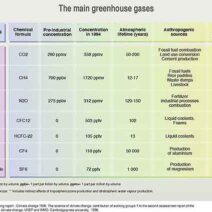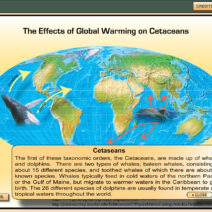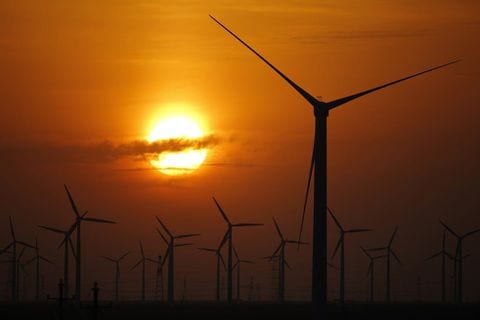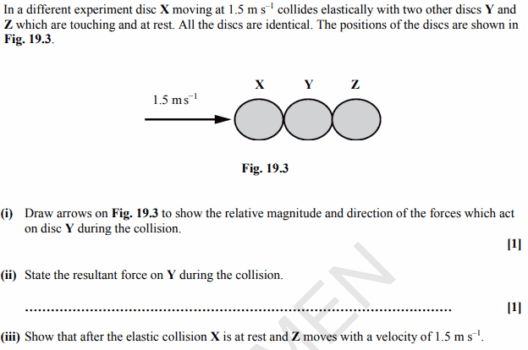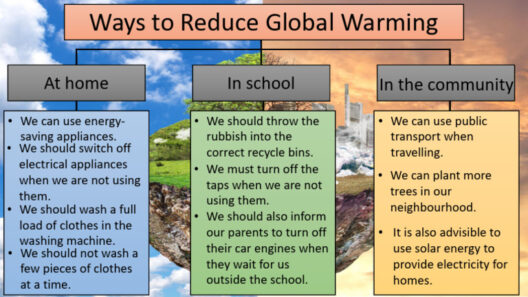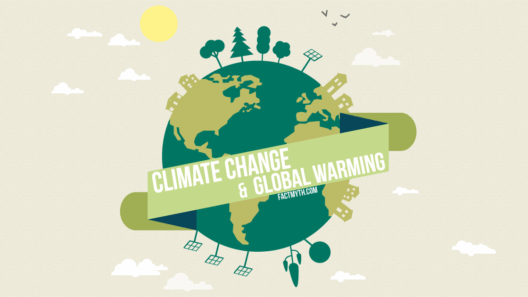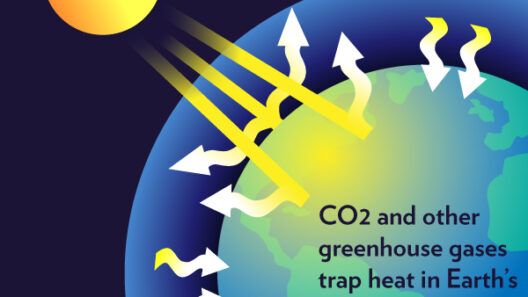In recent decades, the parlance surrounding climate change has evolved into a clarion call for action, a stark admonition against the unrelenting rise of temperatures on our planet. Global warming, at its core, is more than a mere scientific phenomenon; it is a palpable reality that wields enormous transformational power over our ecosystems, weather patterns, and ultimately, our existence. This increase in Earth’s average surface temperature is predominantly attributed to human activities, specifically the excessive emission of greenhouse gases. The forces of industrialization, deforestation, and fossil fuel consumption have cumulatively altered the very fabric of our atmosphere.
The science of global warming engages the most intricate of systems—interactions among the atmosphere, oceans, land, and diverse life forms. This complex ballet of elements gives rise to a compelling narrative punctuated by both peril and promise, emphasizing the urgent need for collective awareness and action. With that in mind, let us delve into the depths of this pressing issue, unraveling the scientific intricacies that underpin the phenomenon known as global warming.
Understanding the Greenhouse Effect: Nature’s Blanket
Picture the Earth clad in a warm, insulating blanket woven by nature. This is the greenhouse effect—a crucial process that sustains life as we know it. Solar radiation traverses the vast expanse of space and reaches our planet. Approximately 30% of this sunlight reflects back into space, while the remaining 70% is absorbed by the atmosphere, land, and oceans, warming the planet. In a balanced system, some of this heat escapes back into space. However, an excess of greenhouse gases (GHGs)—such as carbon dioxide, methane, and nitrous oxide—acts like a thickening blanket, trapping warmth and preventing it from escaping.
This alteration in balance leads to a cascade of consequences, including intensified heatwaves, prolonged droughts, and increasingly violent storms. The climate system, already complex, becomes increasingly volatile as a result of this human-induced amplification of the greenhouse effect. For instance, the Intergovernmental Panel on Climate Change (IPCC) consistently reports rising global temperatures and their correlation with our relentless carbon footprint.
The Unraveling of Natural Systems: The Ripple Effect
As global warming progresses, it unfurls a tapestry of ecological upheaval. Consider glaciers, ancient sentinels that cover vast expanses of land and sea. As temperatures increase, glaciers melt, contributing to rising sea levels. This ceaseless retreat of ice signals not just a change in scenery but a dire threat to coastal communities and ecosystems. The specter of displaced populations—climate refugees—looms large, presenting ethical and logistical challenges that stretch well beyond mere environmental concerns.
The impact of global warming extends to our oceans, where ecosystems teem with intricate relationships. Warmer waters precipitate coral bleaching, a process that undoes the magnificent biodiversity of coral reefs. The loss of these vibrant underwater structures threatens myriad marine species and jeopardizes the livelihoods of countless coastal populations who depend on fishing and tourism. The demise of one species precipitates a domino effect, shaking the foundations of aquatic life and disrupting food chains.
Meanwhile, terrestrial habitats experience their own metamorphosis under the watchful eye of climate change. Species, unable to adapt to the rapid change in their environment, face extinction. Ecosystems become unrecognizable, and the delicate balance of predator and prey is upset, leading to further repercussions that ripple through food webs and habitats.
This phenomenon raises pertinent questions about the resilience of our planet and the adaptability of humanity. Can we rise above our current trajectory?
Humanity’s Role: The Driving Force and the Solution
As the architects of this predicament, humans wield both the hammer of destruction and the chisel of restoration. Transitioning towards renewable energy sources—solar, wind, and hydroelectric—offers a viable avenue for correcting our course. By investing in sustainable practices, we can lessen our dependency on fossil fuels, curtailing emissions and fostering a healthier planet.
Another vital weapon in our arsenal is reforestation. Trees, often termed “the lungs of our planet,” play an indispensable role in absorbing carbon dioxide from the atmosphere. This duality—sustaining life while sequestering carbon—positions forests as a formidable ally in combating global warming.
The role of policy and international accord cannot be underestimated. Initiatives such as the Paris Agreement epitomize collective global efforts to cap rising temperatures and curb emissions. However, the effectiveness of such agreements is contingent upon the commitment of nations to hold themselves accountable in implementing necessary changes.
Conclusion: Navigating a Warming World
Global warming serves as a resounding reminder of the symbiotic relationship between humanity and nature. The intricate interplay of science and morality reflects our current predicament—caught in the nexus of progress and preservation. As we explore the nuances of this pressing issue, it is essential to remember that while the challenges are daunting, they are not insurmountable. The antidote to apathy is education, and therefore the onus lies upon us to become informed stewards of the Earth. By weaving together awareness, action, and innovation, we may yet nurture our planet, safeguarding it for generations to come. The narrative of global warming is still being written; let us ensure it concludes on a note of hope and restoration.
